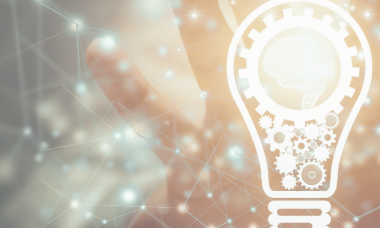Learning reinvented for a multi-generational workforce
L&D once had the luxury of thinking in a linear way. In a time when careers progresses steadily up a defined ladder, learning was often tied firmly to job roles and departments or unlocked at different levels, like management training.
Different generations could follow one after the other along this pathway to a rewarding career.
This world has now fractured and fragmented. Linear pathways are disappearing. Now, all generations are facing new learning challenges all the time, whether due to the impacts of digital disruption, or people challenges like managing diverse and remote teams.
L&D teams now have to embrace a multi-generational learning model equipped for the future. This will not be tied to traditional career journeys; rather, it is likely to be fast-paced, modular and flexible based on skills acquisition, with skills transferability in mind.
It will also move away from emphasising hierarchy or generational differences. Instead, it will treat all generations with the respect for the potential, skills and contribution they bring, to deliver learning and opportunities to all, including into longer stretching careers.
The new multi-generational learning project
What would a multi-generational learning program that was fit the future look like?
At one time, there was a notion learning ends in one’s 20s, career progression ends in the 40s, and work ends in the 60s. While this may have been a useful rule of thumb at one time, longer careers and disruption mean this is not a sustainable representation of the working journey.
Instead, Baby Boomers, Gen Xers, the Millennials and Gen Z will all be moving through the workforce in a variety of directions, and all generations will need to bring their unique viewpoints and skills to the collaboration table to support future fit financial institutions.
Here are some characteristics of a learning approach that could sustain into the future.
1. Continuous
First will be the genuine adoption, pursuit and promotion of a continuous or lifelong learning model.
This will go well beyond a compliance-driven Continuous Professional Development (CPD); it will recognise that to maintain employability into the future, employees of all generations will need to commit to ongoing learning in a variety of areas. This would include job-relevant, practical and task-based skills, as well as soft skills and capabilities, like critical thinking.
Organisations should expect employees to be dipping in and out of short-term learning, supplied either internally or through third party providers, whether they are just developing their careers, or adding to the breadth of their workforce contribution as older workers. For example, a Millennial looking to step up may cultivate opportunities in their future career with leadership training, while a Boomer might learn how data analysis can support their work.
The key is learning is taking place among all generations all the time. There is a recognition change is ongoing, and learning will need to be continuous to support top performance.
2. Modular
Turning away from traditional career ladders, a good multi-generational learning program is likely to adopt a more modular and skill-based approach to the learning and career journey.
This will see employees able to take on short, bite-sized and outcome-oriented learning that will build capabilities in a variety of areas that could be useful within current roles, as well as acting as stepping stones to related or different roles that will make use of transferable skills.
Modular learning will allow different generations of employees to better fit learning into busy work and family lives and target specific skills acquisition linked to specific pathways or goals.
3. Multi-modal
There is no right way to deliver learning when managing a multi-generational learning program. Each generation will have its own biases and favourites (some of them overly clichéd), and even within generations, each learner brings their own preferences and learning styles.
The way to conquer this is to make them delivery mode agnostic, and embrace the best of what each mode has to offer. This will include more purely online and digital content than in the past, in ways proven to engage and capitalise on flexibility, in models like LinkedIn Learning.
But it will also get better at blending learning, with strong integration of face-to-face courses, workshops or even tech-style hackathons, that take advantage of different learning styles in a variety of ways to both enhance learning outcomes, and boost engagement in learning.
4. On-demand
Learning is likely to move towards an on-demand model in ways that increase employee agency across all ages and generations.
Rather than employees having to wait to access learning when it is deemed bureaucratically appropriate (although there will need to be some curation, especially when learning budgets come into play) employees will be freed up to pursue learning programs sooner that enhance or maintain their employability and develop their potential, when and how they like.
This could be facilitated from a centralised learning library or using external learning budgets with partners. It would empower employees by helping them acquire knowledge and skills faster in convenient ways, and tap their natural curiosity and ambition for the organisation.
5. Personalised
Technology is increasingly allowing for personalisation of learning journeys, and in future, this is likely to support stronger engagement in the learning project across multiple generations.
With each employee potentially having a personalised learning portal with access to a library of courses, they can be delivered age, role and interest driven learning content through algorithmic suggestion, and take advantage of tools like individualised skills maps and learning pathways to new roles. This will demonstrate organisational engagement with employees’ personal journeys, while unlocking the power of individual engagement in learning.
6. Mobility-enhancing
Mobility is both an opportunity and underemphasised area of learning and development.
By developing flexible, creative skills pathways within organisations, future L&D programs will be able to provide detailed maps of opportunities that leverage skill adjacencies, indicating how a workforce could transition to new roles through the acquisition of new skills.
This would encourage genuine development of talent across the organisation, in addition to existing fast-track talent programs, and support retention by giving employees pathways to progress that extend beyond barriers that may be in place within existing teams.
7. Strategy-driven
A multi-generational learning program will obviously need to be supported by a strong learning culture that engages employees of all ages. It will also need to be values and strategy driven; organisations will have to build the focus of their learning programs around the future of the organisation, including understanding and incentivising the development of the soft and hard skills they will need, and engage their entire workforces in that vision and mission.
Enterprises across Australia trust us with workforce skills management. Find our how we help clients achieve better workforce learning and development. Click here.






